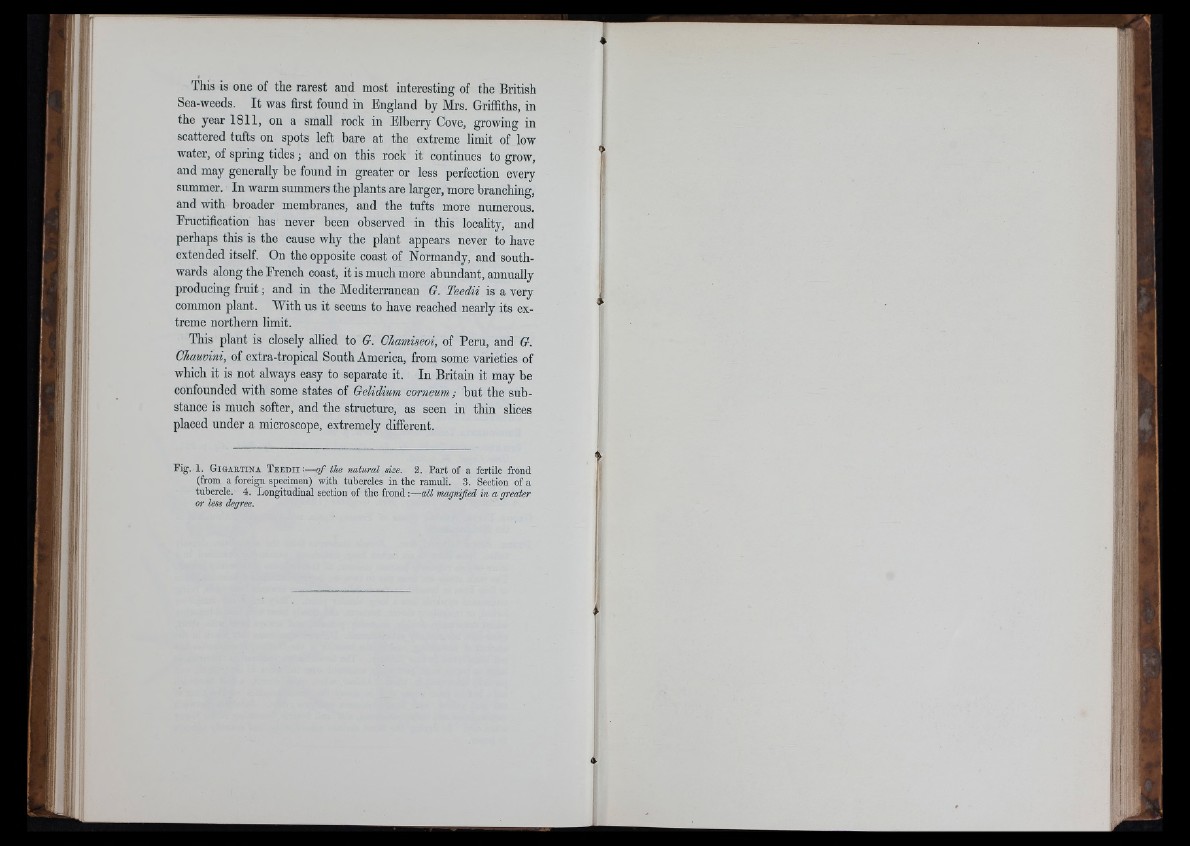
This is one of the rarest and most interesting of the British
Sea-weeds. It was first found in England by Mrs. Griffiths, in
the year I8 I1 , on a small rock in Elberry Cove, growing in
scattered tufts on spots left bare at the extreme limit of low
water, of spring tides; and on this rock it continues to grow,
and may generally be found in greater or less perfection every
summer. In warm summers the plants are larger, more branching,
and with broader membranes, and the tufts more numerous.
Fructification has never been observed in this locality, and
perhaps this is the cause why the plant appears never to have
extended itself. On the opposite coast of Normandy, and southwards
along the French coast, it is much more abundant, annually
producing fruit; and in the Mediterranean G. Teedii is a very
common plant. With us it seems to have reached nearly its extreme
northern limit.
This plant is closely allied to G. Chamiseoi, of Peru, and G.
Chauvini, of extra-tropical South America, from some varieties of
which it is not always easy to separate it. In Britain it may be
confounded with some states of Gelidium corneum; but the substance
is much softer, and the structure, as seen in thin slices
placed under a microscope, extremely different.
Fig. 1. G i g a e t i n a T e e d i i :— « / the natural size. 2. Part of a fertile frond
(from a foreign specimen) with tubercles in the ramuli. 3. Section of a
tubercle. 4. Longitudinal section of the frond :— all mag
or less degree.